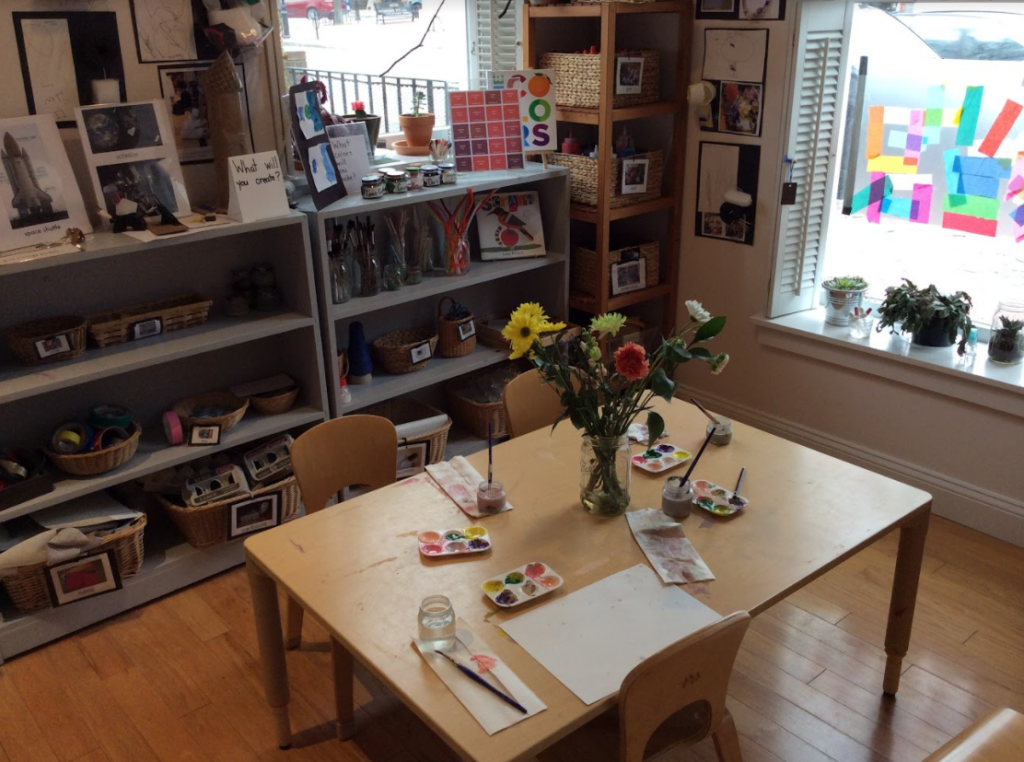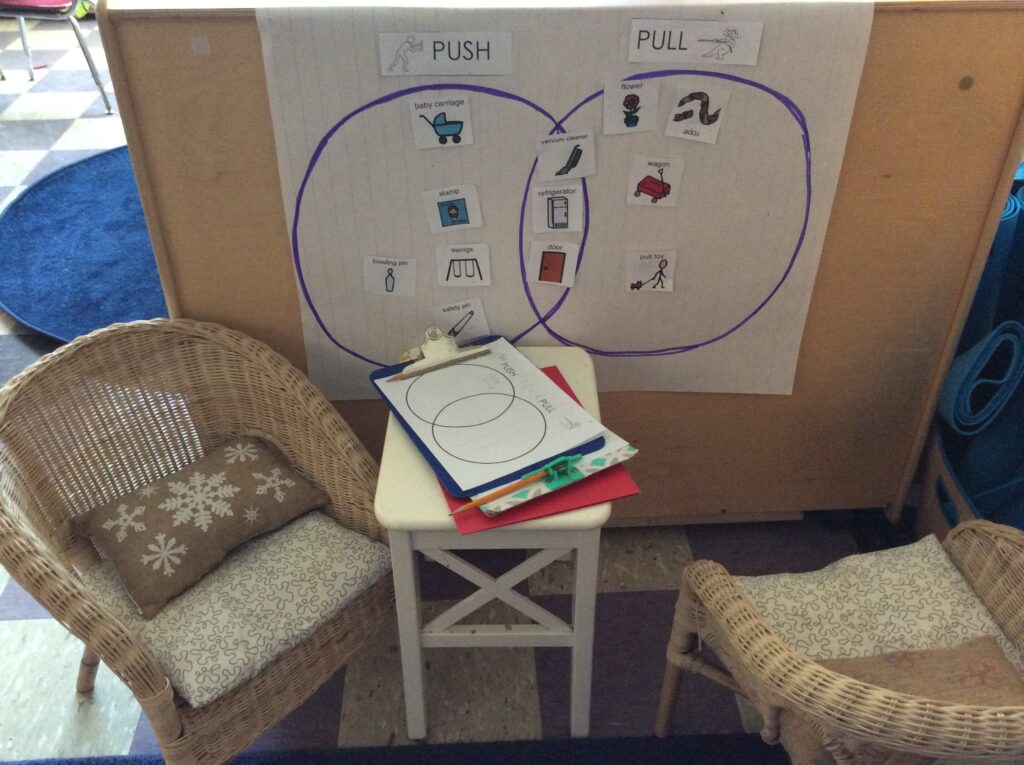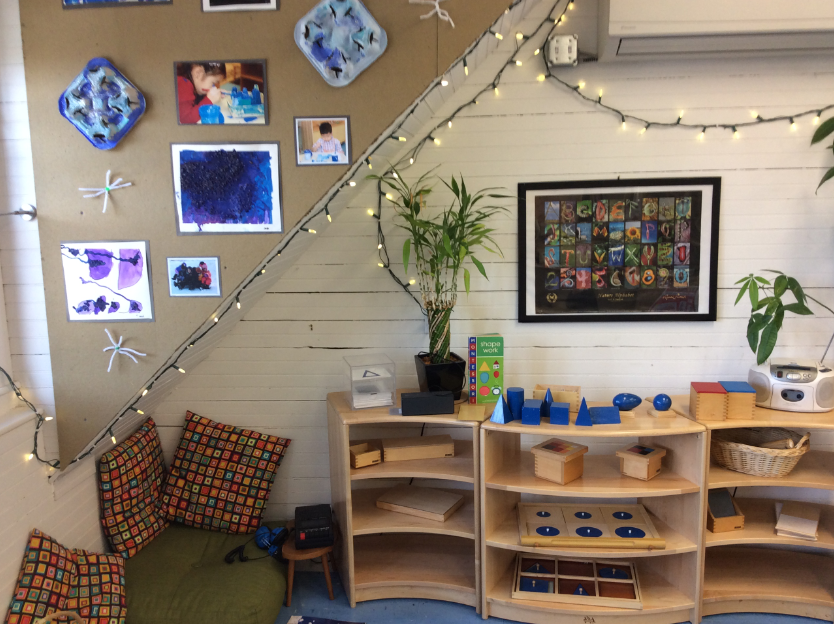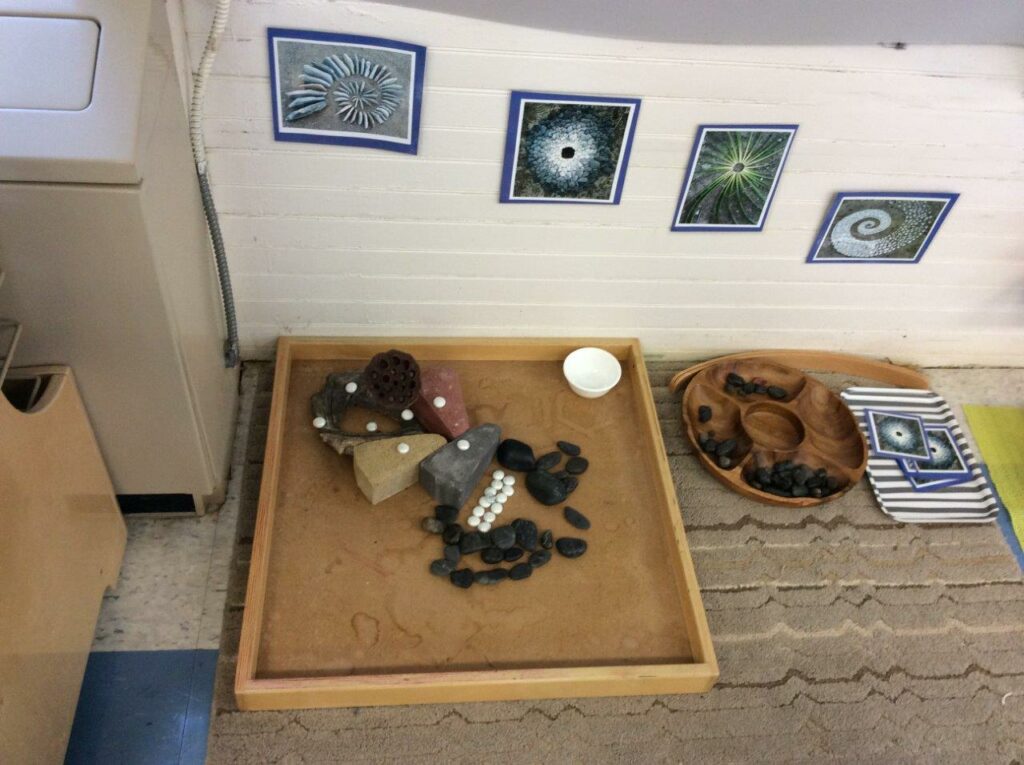Ultimately, the classroom should be a flexible space that can accommodate children’s social, emotional, physical, and intellectual needs. Designing for each of these domains requires thinking about the ways we organize furniture and materials. Teachers might wonder:
- How can I create a classroom environment that trusts children and enables me to share control with them?
- How does my environment support my goals for children? Or not?
Tables and Seating
Often classrooms feel like a “sea of tables,” and very large tables at that. Large tables are great for communal activities, collaborative projects and wonderful conversations at mealtime. But they don’t offer children a range of options they need for their projects, like working on a project with a partner, or having alone time for focused work.
Have a few large tables to promote collaboration and large-scale projects along with smaller tables to offer children a range of seating and work options. Small tables can always be pushed together to create larger work spaces. Lower the legs on tables for a kneeling work space with small carpet squares around it. This opens up classroom space since there are no chairs at these low tables. Small low tables for two children invite more intimate partner play or allow two children to do quiet work side by side. Work mats act as a “table on the floor” and provide a break from sitting and much needed floor time. They also create a boundary for materials, protecting them from being stepped on and designating ownership of that work.
Opportunities to work alone are often scarce in early childhood classroom and support the development of repetition, concentration, perseverance, reflection, and an internal sense of calm. Often, the only solitary place in a classroom is the “calm down corner,” where a teacher sends a child who becomes disruptive. Children and adults need time and places for solitude that promotes focus and thinking time. Offering choice about how and where children sit sends them the message that the environment can be flexible to meet their needs.
Often furnishings are a mismatch of items. Try to streamline the visual impact of your furnishings by sticking with one color or type. If you have different colored chairs and tables, can you trade the furniture with another classroom so that each has a uniform set of chairs and tables? Many companies make beautiful natural wood furniture that is lightweight, durable, and easy to clean. Natural wood also means there is less color to compete with your materials which will be of all shapes, shades, and sizes.



